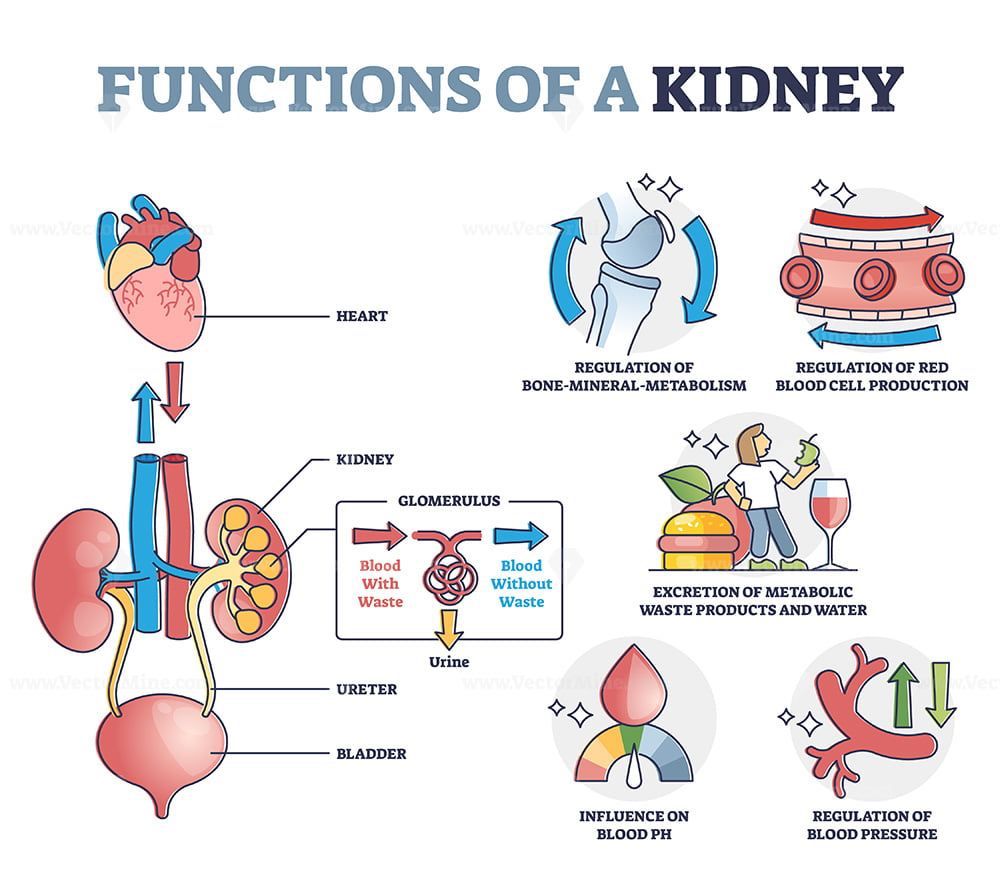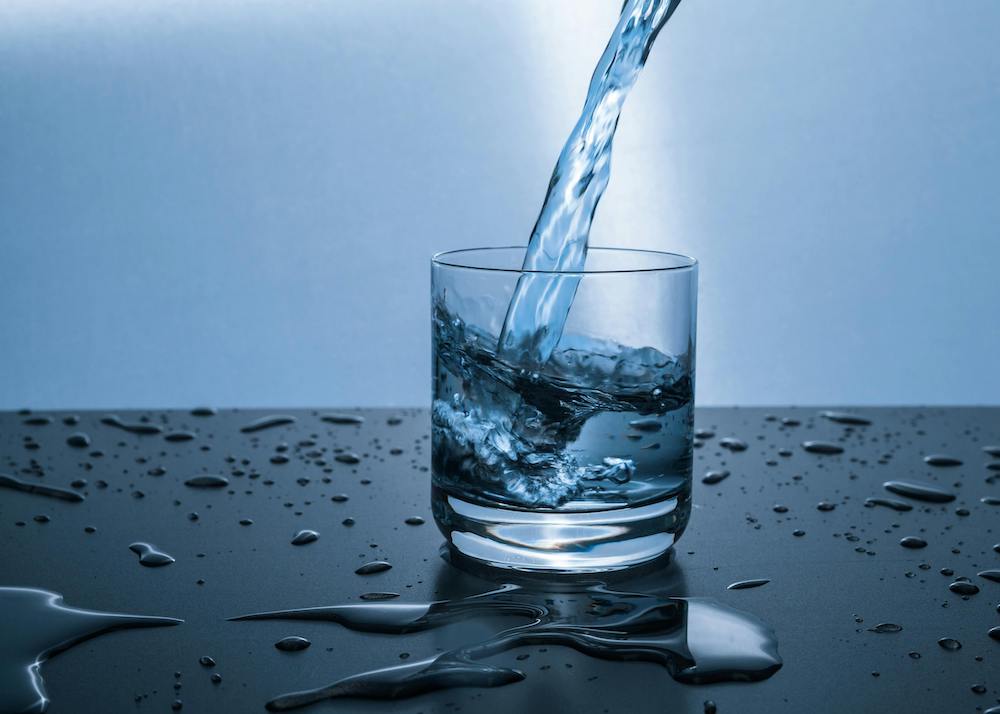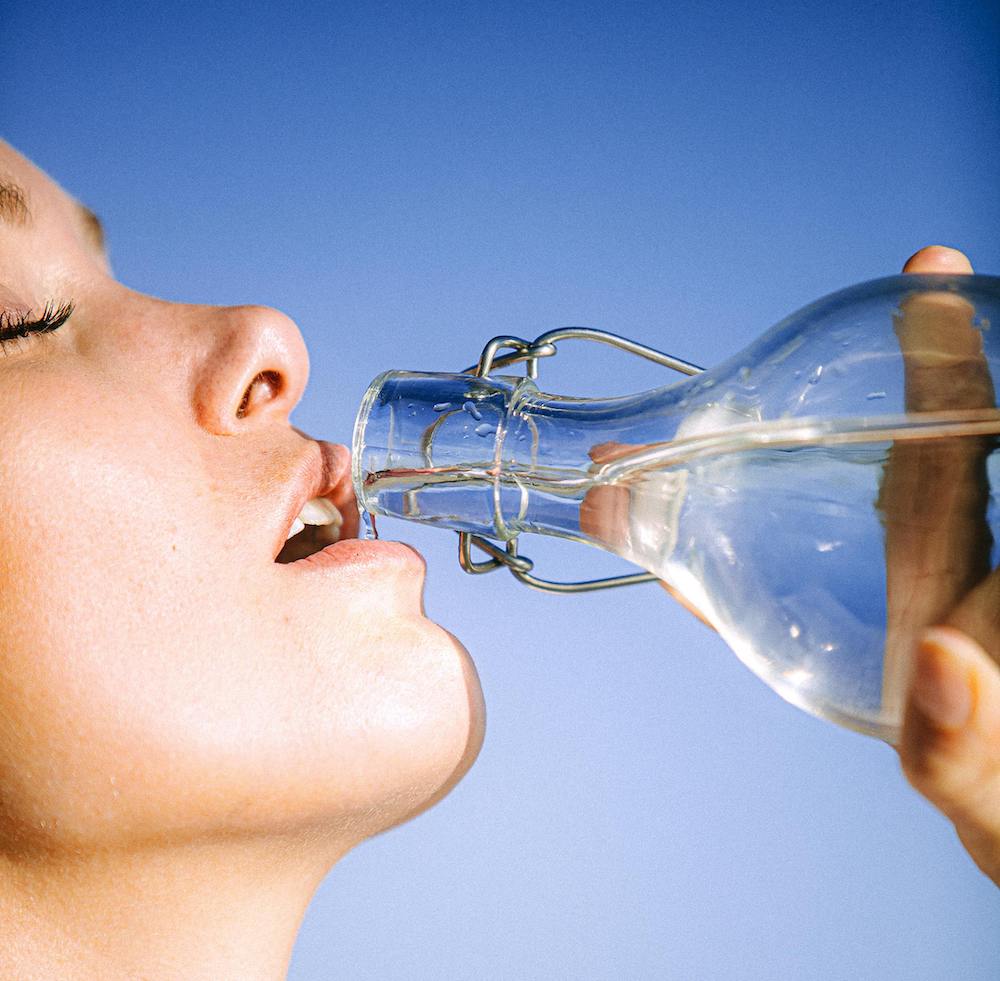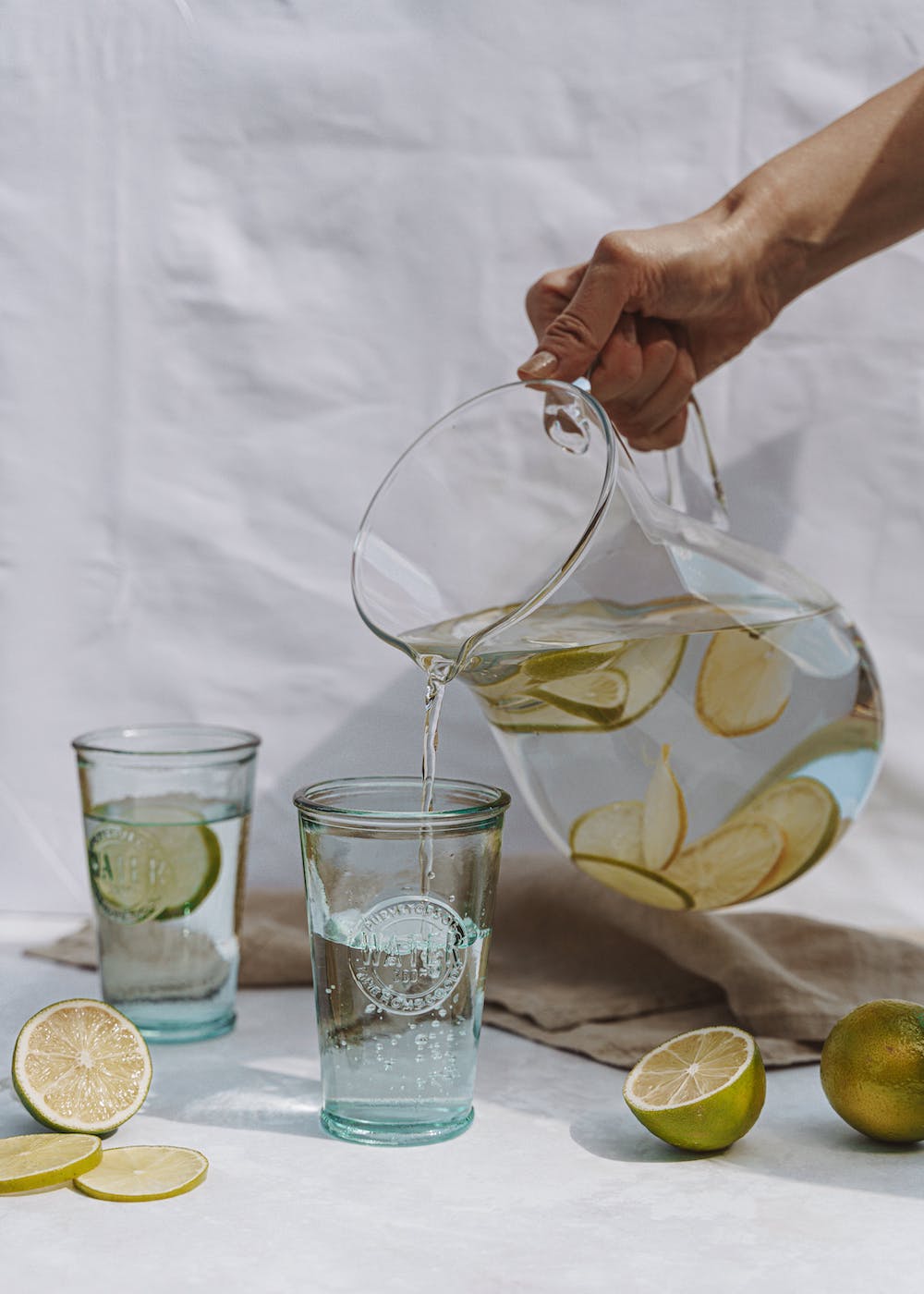Unlock Holistic Detox: Harness Your Kidneys’ Power to Cleanse and Restore Naturally
Revitalise Your Body: Unleash 7 Powerhouse Detox Processes! Simple Tips for Instant Transformation, Regeneration, and Accelerated Healing.
Week 4 – This week The Kidneys!
Optimise Your Kidney Health: Detox, Balance & Thrive!
Welcome to Week 4 of our detox journey, where we focus on another essential detox powerhouse—the kidneys! These vital organs work around the clock to filter toxins, regulate fluid balance, and maintain overall well-being, yet modern lifestyle factors can place them under strain.
In this article, we’ll explore:
✔️ How your kidneys filter and eliminate toxins
✔️ Signs of kidney overload and imbalance
✔️ Essential nutrients and foods for kidney support
✔️ Hydration and lifestyle habits to optimise kidney function
If you’ve ever experienced fatigue, fluid retention, or kidney-related discomfort, or simply want to enhance your body’s natural detox system, this guide is for you! Let’s dive in and give your kidneys the care they deserve.
WEEK 4: The Kidneys
Your Body’s Unsung Heroes
The kidneys do far more than just filter fluids—they are powerhouse organs responsible for keeping your body in balance. They regulate hydration, filter out toxins, support blood pressure control, and even play a role in red blood cell production.
To keep your kidneys functioning at their best, hydration is key. Drinking enough water helps flush out waste efficiently, reducing strain on these vital organs. When combined with a nutrient-rich diet and a healthy lifestyle, you can support your kidneys’ ability to protect your overall health.
What Your Kidneys Do for You
- Filtration of Blood: The kidneys filter waste, toxins, and excess fluids from the bloodstream, turning them into urine for elimination.
- Fluid and Electrolyte Balance: They regulate water and key minerals like sodium and potassium, ensuring proper hydration and cell function.
- Blood Pressure Regulation: By managing blood volume and releasing renin, the kidneys help keep blood pressure stable.
- Red Blood Cell Production: The kidneys produce erythropoietin, a hormone that stimulates red blood cell formation, maintaining oxygen supply in the body.
- Acid-Base Balance: To keep your pH levels stable, the kidneys remove hydrogen ions and reabsorb bicarbonate ions, preventing excessive acidity or alkalinity.
- Toxin Excretion: Beyond filtering waste, the kidneys remove toxins, drugs, and harmful substances to protect the body from buildup.
Understanding Chronic Kidney Disease (CKD)
One of the most common kidney-related conditions worldwide, Chronic Kidney Disease (CKD) occurs when kidney function gradually declines over time. This impairs the kidneys’ ability to filter waste and excess fluids, leading to potential health complications.
Common Causes of CKD:
- Diabetes – High blood sugar damages the delicate blood vessels in the kidneys.
- High Blood Pressure – Increased pressure strains kidney function over time.
- Genetics & Other Factors – Some individuals are predisposed to kidney disease due to inherited conditions or other medical issues.
CKD often progresses silently in its early stages, with few noticeable symptoms. However, as it advances, signs may include:
✔ Fatigue
✔ Swelling in the legs, ankles, or face
✔ Changes in urine output
✔ Increased blood pressure
Recognising these signs early can make a significant difference in managing kidney health.
How to Support Your Kidneys
- Drink plenty of water – Hydration helps flush toxins efficiently.
- Prioritise a kidney-friendly diet – Reduce processed foods, limit excess salt, and eat plenty of fresh vegetables.
- Manage blood sugar and blood pressure – These are major risk factors for kidney disease.
- Stay active – Exercise helps improve circulation and overall organ function.
- Limit alcohol and medications that stress the kidneys – Certain drugs, including NSAIDs, can overburden kidney function when used excessively.
A Much Longer Word On Oxalates!
The Problem with Oxalates
I’ve spoken at length about the kidney issues I experienced, but another major struggle was intense joint pain. I would wake up in the morning feeling like there were shards of glass in my fingers and toes—a deep, sharp pain that made even simple movements uncomfortable.
What I didn’t realise at the time was that calcium oxalate was building up in my joints, largely due to an overabundance of oxalate-rich foods in my diet. I was eating a lot of spinach and other greens, unknowingly contributing to the issue.
My Oxalate Detox Experience
When I finally committed to fully detoxing from oxalates, I was in agony for weeks. The pain ran deep through my body as my kidneys worked overtime to process and eliminate all the oxalate I had built up over time.
Looking back, I would not recommend an abrupt oxalate detox like this. It was too intense, and if I had known better, I would have taken a more gradual approach.
How Oxalic Acid Builds Up in the Body
Oxalic acid (or oxalate) is a natural compound found in many plant-based foods and is also produced by the body as a metabolic byproduct. It typically exits the body through urine after being filtered by the kidneys. However, when oxalate levels become too high, they can bind with minerals—especially calcium—to form calcium oxalate crystals, the most common cause of kidney stones.
Factors That Contribute to Oxalate Buildup:
- High-Oxalate Diet – Consuming excessive oxalate-rich foods can increase oxalate levels in the body.
- Low Calcium Intake – Calcium binds to oxalate in the intestines, preventing its absorption. A low-calcium dietcan allow more oxalate to enter the bloodstream.
- Gut Health Issues – Conditions like leaky gut, Crohn’s disease, IBS, or dysbiosis (imbalanced gut bacteria) can lead to poor oxalate metabolism.
- Vitamin Deficiencies – Low magnesium and vitamin B6 levels can contribute to higher oxalate accumulation.
- Kidney Function Impairment – If the kidneys are compromised, oxalate excretion may be less efficient, leading to higher retention.
- Excess Vitamin C Intake – In high doses, vitamin C can convert into oxalate in the body, increasing oxalate load.
- Antibiotic Use – Some beneficial gut bacteria, such as Oxalobacter formigenes, help break down oxalates. Frequent antibiotic use can reduce these bacteria, leading to higher oxalate absorption.
*BEFORE YOU DIVE INTO THE RABBIT HOLE*
When the kidneys and gut are well-nourished and functioning optimally, they can efficiently process and eliminate oxalates. The problem arises when imbalances develop in the body, making it harder to break down and excrete oxalates properly. This can lead to oxalate accumulation, where excess oxalates are stored in tissues, joints, and even kidneys, increasing the risk of kidney stones and inflammation.
Another challenge occurs when oxalates are consumed in high and concentrated amounts, overwhelming the body’s ability to process them. Supporting kidney and gut health is key to maintaining a healthy oxalate balance.
If you’re unsure about how oxalates may be affecting your health, it’s always best to seek guidance from a trained nutritionist who can help you create a balanced diet that works for your body’s unique needs.
Foods Highest in Oxalates
Oxalate levels vary widely in foods, but some plant-based foods contain particularly high amounts. Here are the highest-oxalate foods:
Very High-Oxalate Foods:
- Leafy Greens – Spinach, beet greens, Swiss chard
- Nuts & Seeds – Almonds, cashews, peanuts, sesame seeds
- Vegetables – Beets, sweet potatoes, rhubarb, okra
- Legumes – Soy products (tofu, soy milk), black beans
- Fruits – Starfruit, kiwi, raspberries, blackberries
- Grains & Starches – Buckwheat, amaranth, quinoa, whole wheat
- Chocolate & Cocoa Products – Dark chocolate, cocoa powder
Moderate-Oxalate Foods:
- Other Leafy Greens – Kale, parsley
- Root Vegetables – Carrots, parsnips
- Other Fruits – Oranges, figs, grapes
- Coffee & Tea – Black tea, green tea, instant coffee
NB Now I eat alot more animal foods, meat, eggs and unpasterised dairy. This is low oxalate and so less of an agrivant for me.
Why Does Calcium Oxalate End Up in Joints and Get Stored in the Body?
Calcium oxalate is a crystalline compound formed when oxalate (a naturally occurring compound from food and metabolism) binds with calcium in the body. Normally, the kidneys filter and excrete oxalates through urine. However, when oxalate levels are too high, or kidney function is impaired, calcium oxalate can accumulate and deposit in tissues, including the joints.
Key Reasons for Calcium Oxalate Buildup in the Body:
- Overconsumption of Oxalate-Rich Foods
- If your diet is high in oxalates (e.g., spinach, nuts, chocolate, rhubarb), more oxalate enters the bloodstream, increasing the risk of deposits forming.
- Insufficient Calcium in the Diet
- Dietary calcium binds with oxalate in the intestines, preventing its absorption into the bloodstream. If you consume too little calcium, more oxalate gets absorbed and circulates in the body, where it can form deposits.
- Gut Health Issues & Malabsorption
- Leaky gut, IBS, Crohn’s disease, or dysbiosis can impair oxalate metabolism.
- When the gut isn’t functioning properly, oxalates are absorbed at higher levels, increasing the burden on the kidneys.
- Oxalobacter formigenes, a gut bacterium that breaks down oxalates, can be damaged by antibiotics or poor gut health, leading to increased oxalate retention.
- Kidney Dysfunction or Overload
- If the kidneys cannot excrete oxalates efficiently, they accumulate in the body. This can happen due to:
- Chronic dehydration (less urine flow leads to oxalate crystallisation)
- Chronic kidney disease (reduced filtration capacity)
- High intake of vitamin C (which converts to oxalate in the body)
- Oxalate Deposits in Joints (Pseudo-Gout & Inflammation)
- When oxalates crystallise and accumulate in joints, they can cause pain, stiffness, and inflammation.
- This condition is often mistaken for gout or arthritis but is actually due to calcium oxalate or calcium pyrophosphate crystals.
- Over time, this triggers chronic inflammation and may contribute to tissue damage.
- Stored Oxalates & Detox Reactions
- When oxalates accumulate, they embed in tissues (including the joints, kidneys, and even muscles).
- If someone suddenly cuts out oxalates from their diet, the body may start releasing stored oxalates too quickly, leading to painful detox symptoms such as joint pain, fatigue, and sharp muscle pains.
How to Reduce Oxalate Buildup Safely
✔ Gradually reduce high-oxalate foods instead of cutting them out suddenly.
✔ Consume adequate bio-available calcium to bind oxalates in the gut.
✔ Support gut health with probiotics and fiber-rich foods.
✔ Drink plenty of filtered water to aid oxalate elimination.
✔ Consider high-quality magnesium and vitamin B6, which help the body process oxalates.
How to Reduce Oxalates Safely
If this feels relevant to you and you’re considering reducing oxalates in your diet, I strongly recommend taking it slowly:
✔ Gradually reduce high-oxalate foods instead of cutting them out all at once.
✔ Introduce supportive foods that help the body process oxalates more gently.
✔ Stay well-hydrated to help flush out excess oxalates.
Seek Professional Guidance
If you plan to embark on this journey, I highly recommend working with a qualified professional who deeply understands oxalate detoxing. They can guide you through a pain-free process and help you avoid unnecessary discomfort.
Your health is a long-term journey—take it one step at a time. 😊
ACTIONS FOR CHANGE!
1. Start Your Day with Lemon Water 🍋
Kickstart your morning with a refreshing glass of water with fresh lemon juice. The citric acid and vitamin C in lemons help reduce inflammation and may prevent kidney stone formation, supporting overall kidney health.
2. Incorporate Meditation for Balance 🧘♀️
Meditation isn’t just for relaxation—it has been shown to lower blood pressure and reduce stress more effectively than some medications. A few minutes of daily mindfulness can positively impact kidney health by reducing strain on the body.
3. Hydrate Smarter 💧
Proper hydration goes beyond drinking filtered or spring water—it’s about supporting cellular hydration too! Try these simple steps:
- Reduce exposure to non-native EMFs (electromagnetic fields from man-made technology) to prevent cellular stress.
- Get outside in natural light, especially at sunrise, to regulate hydration and circadian rhythms.
- Practice grounding—walk barefoot on natural surfaces or use an earthing mat to restore balance at the cellular level.
These small, intentional habits can strengthen your kidneys, reduce toxin buildup, and improve overall vitality. Which one will you start with today?
The body is earth and water. The soul air and the mind fire.
Marcus Aurelias circa. 150AD
Next Week: The Lungs.
Did you miss a week? Click the link below to revisit what you missed.
Holistic Services for Women
Are you looking to nurture your body and well-being with women-focused practices like yoga, massage, or yoni steaming?
This blog was co-created with my beloved Ocean, who specialises in women-centered healing. If you’re interested in exploring her offerings, click the link below to learn more:







